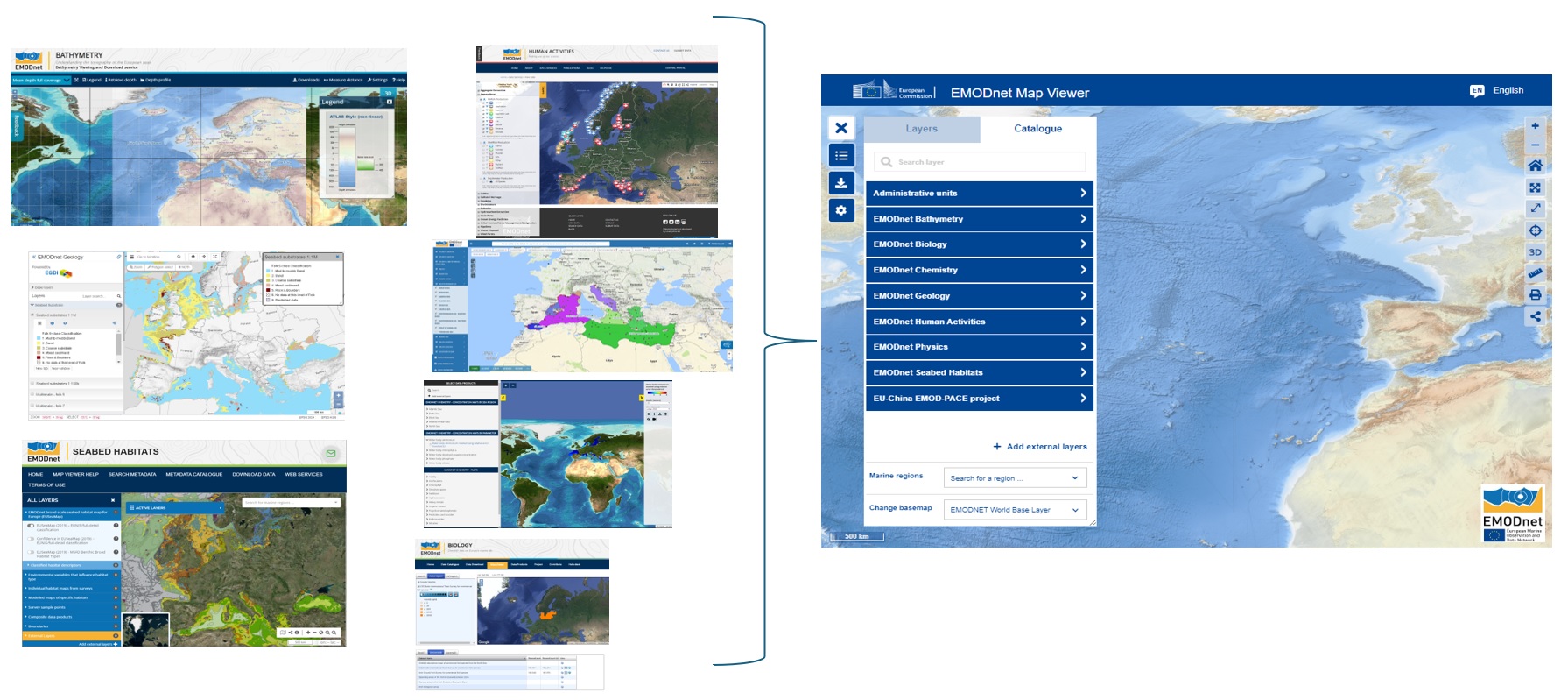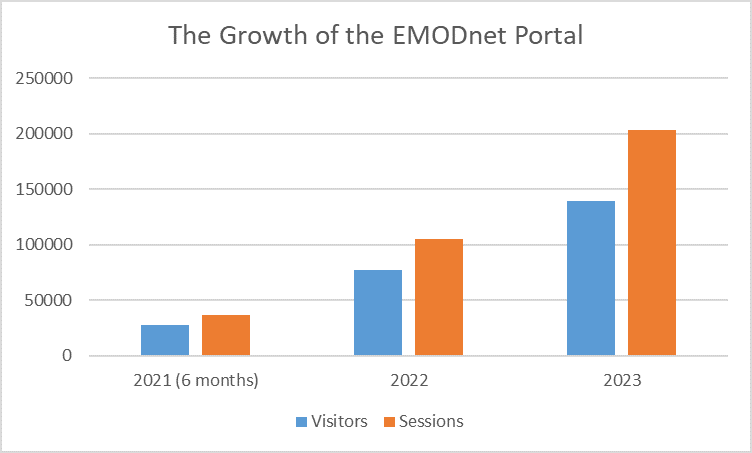BLOG #1 (March 2024): EMODnet’s technical state-of-the-art as a unified Portal
Introduction by Dr. Conor Delaney, EMODnet Technical Coordinator

Just over 1 year ago (end January 2023) EMODnet launched its unified Portal. This meant that EMODnet moved from being seven distinct thematic portals to being one single web Portal. A centralised EMODnet. Prior to 2023 EMODnet was a network of thematic websites, with separate entry points for Bathymetry, Biology, Chemistry, Geology, Human Activities, Seabed Habitats, and Physics. Each thematic portal had its own unique design, data searching functionality, and data download capabilities. For a single thematic user, it was useful, but multi-disciplinary marine environmental and human activities data discovery, access and visualisation and download was not easy, particularly for a less technical user. In January 2023 all the individual thematic websites were shut down and replaced by one single EMODnet web portal, which allows cross-thematic data and data product visualisation in a united and harmonized single EMODnet Map Viewer, underpinned by a single EMODnet catalogue (with harmonised metadata).
Now that a year has passed, this first technical blog is a good time to look at the some of the EMODnet monitoring statistics to see how well the centralized EMODnet is serving users.
Brief overview of EMODnet web trends.
The unification of EMODnet thematics represented the culmination of a digital transformation that started in June 2021 with the movement of the then EMODnet Central Portal to the European Commission Web domain. This initial transition brought major and permanent changes to how the new EMODnet Central Portal would look, and this dictated many of the technical decisions made during the unifying of EMODnet thematic portals with EMODnet Central Portal. The driver for the transformation was a desire to improve access for EU users to the EMODnet data products. To that end, the centralization project delivered the following
- The 7 thematics map viewers were unified into a central EMODnet Map Viewer.
- The 7 thematics metadata catalogues were unified into the central EMODnet metadata catalogue.
- The user-interface was greatly simplified with users being able to download data products directly from the new EMODnet portal without the need for users to login or use a ‘shopping basket’ mechanism.
- EMODnet centralised its tools, guidelines and methodologies that underpin its thematic services
These goals were achieved. Let’s take a dive into EMODnet Portal developments and achievements. Figure 1 illustrates the before and after of the centralisation of the EMODnet thematic portals.

Figure 1: On the left are the map viewers of the seven thematic portals which were merged into the one portal on the right.
So how are we doing?
Below in Figure 2 are the web statistics for the EMODnet Portal covering the period from when it moved to the EC domain (2021) to end of the first year as a centralised EMODnet, i.e., 2023 the year when all the other thematic portals were switched off.

We can clearly see in Figure 2, that not only has the number of unique visitors increased since 2021, but that the number of sessions (repeat visitors and people spending time on the site) has dramatically increased as well. There are now more people using the EMODnet than ever before, with 200,000 sessions in 2023, compared to just over 100,000 in 2022 before centralization!
Hand in hand with the increase in users of the portal has been the increase in the downloads of EMODnet products. It is still too early to fully understand the impact on all the thematic areas within EMODnet, however, we have gained some insight from the progress reporting of EMODnet Bathymetry which nicely overlaps with the first year of the centralised EMODnet. In Table 1, we can see the download statistics for products for the two years before centralisation compared with the statistics collected during the first year of centralisation. The growth in downloads has been dramatic.
|
Progress Report (December - 2020 to December - 2022) |
Progress Report (December - 2022 to December - 2023) |
Growth |
|
|
Digital Terrain Model (DTM) |
25772 |
46349 |
80% |
|
High Resolution-DTM (HR-DTM) |
2160 |
16424 |
660% |
|
Satellite Derived Coastlines |
114 |
1308 |
1047% |
Table 1: The increase in downloads of some of the EMODnet Bathymetry products when compared to the era before centralization.
The future
The increase in downloads of EMODnet products has not been consistent across all thematics or even within thematic portfolios. However, for the first time, we have consistent and reliable statistics on the popularity of EMODnet products which we plan to use to identify areas where EMODnet data services can be improved. EMODnet continues to evolve, and the Portal evolution will be an iterative process with the goal of providing reliable, scalable, accessible, and harmonised data services across all EMODnet themes. In addition, this year, the final external EMODnet portal, that of EMODnet Data Ingestion, will complete its centralization, being merged into the EMODnet Portal to further simplify both the EMODnet user service, and the data submission process, finally providing all EMODnet services in one place. So, at this end of Q1 2024 and looking to the rest of this year, we are in for further technical upgrades of the EMODnet Portal features and functionalities. Stay tuned to this blog for the latest information on EMODnet’s technical developments!
